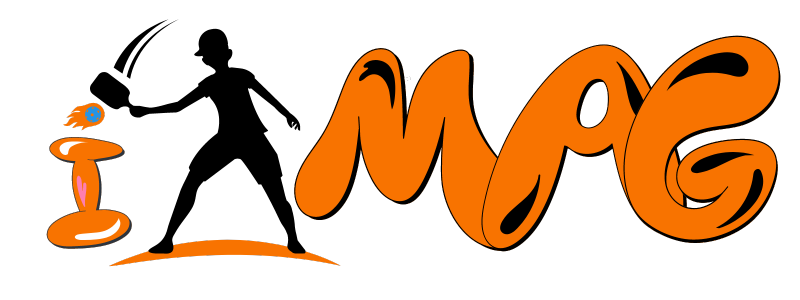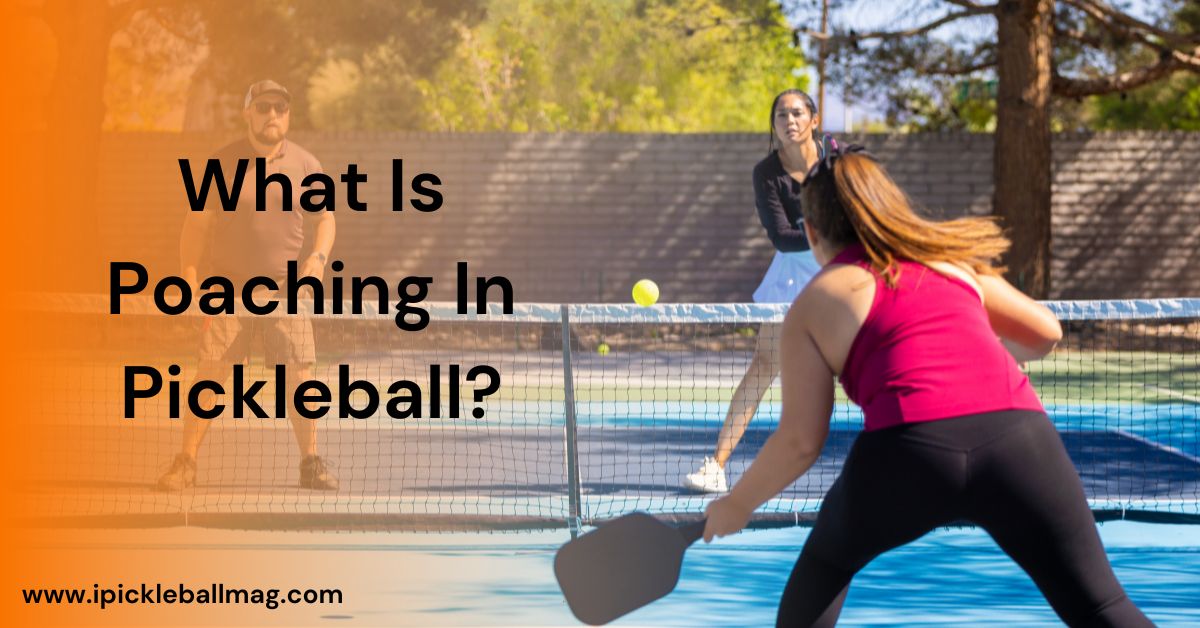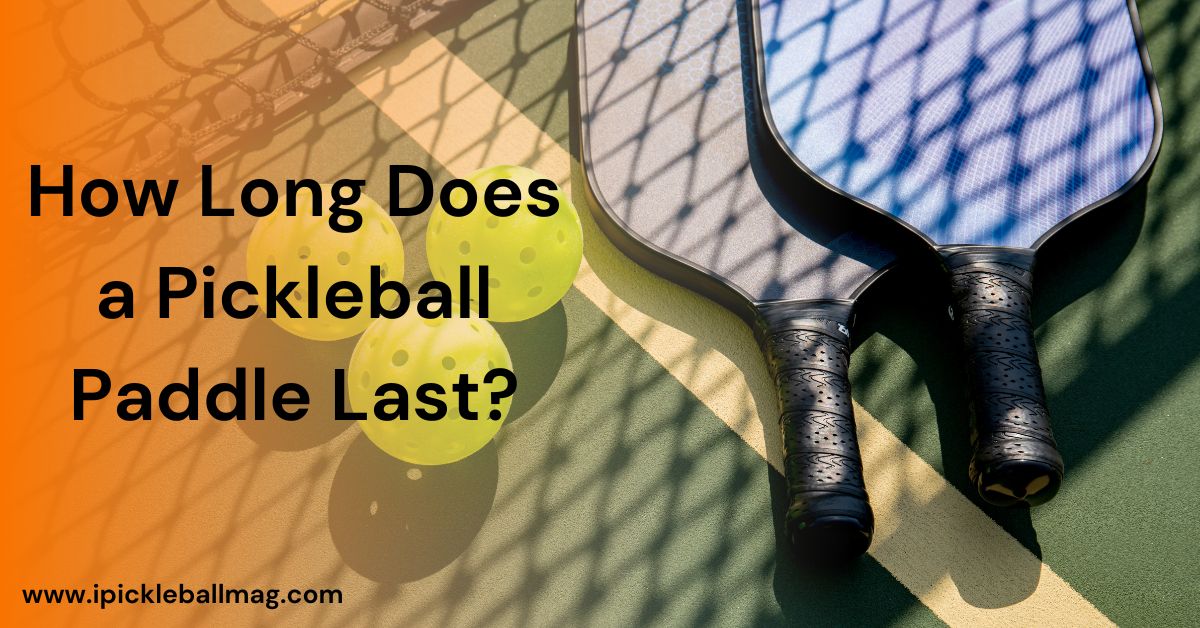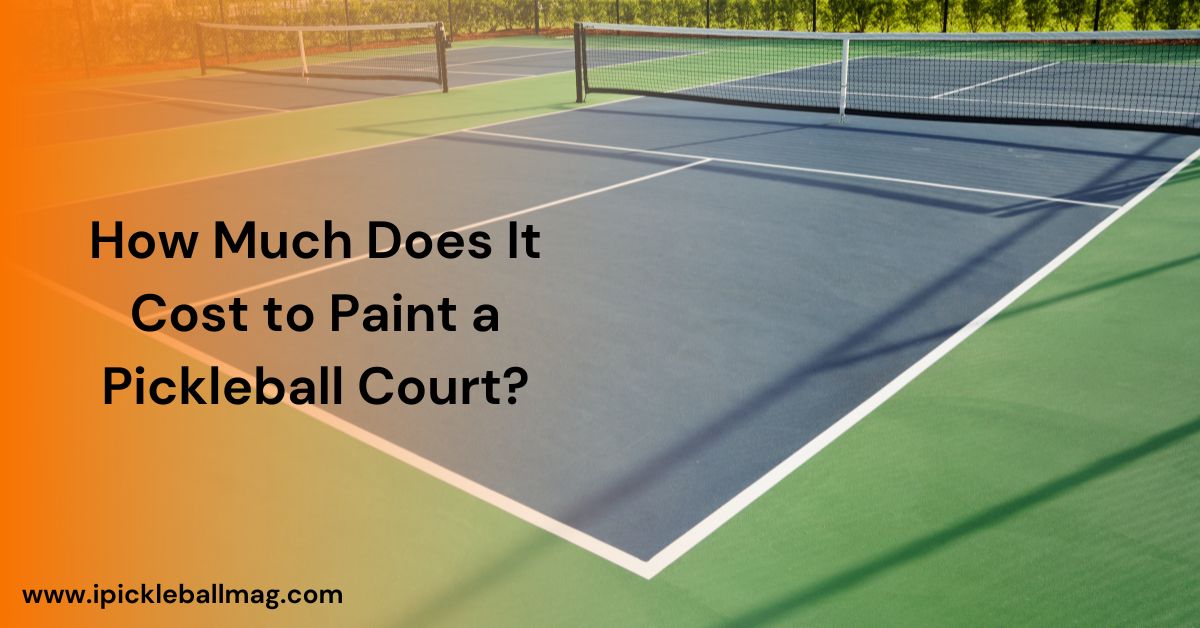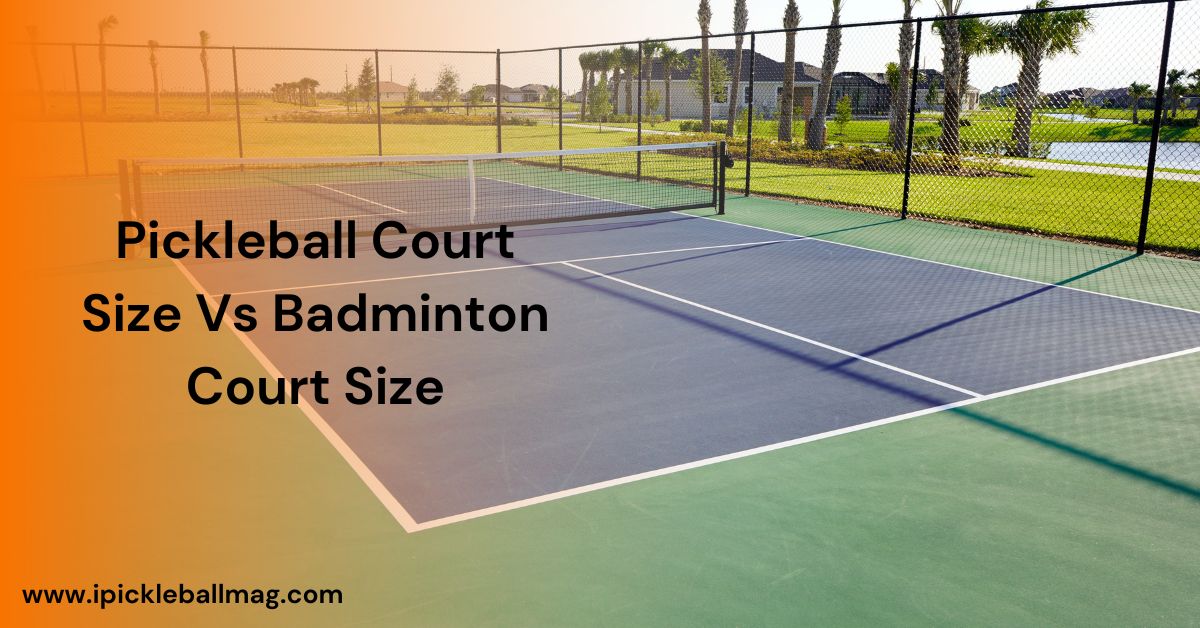Rallies in Pickleball – Everything You Should Know
If you’re new to pickleball, along with erne and volley, you might have heard people talking about a “rally.” But what is a Rally in Pickleball? In this article, we will discuss everything related to rallies in Pickleball and rally scoring.
What is a Rally in Pickleball?
The rally in pickleball refers to a continual back and forth that takes place after the service but before the fault. It’s like a tennis rally but in pickleball. The players keep hitting the ball until someone makes a mistake or can’t return it. This is an exciting part of the game where both teams try to keep the ball going without making a mistake.
A rally can only be ended by two things.
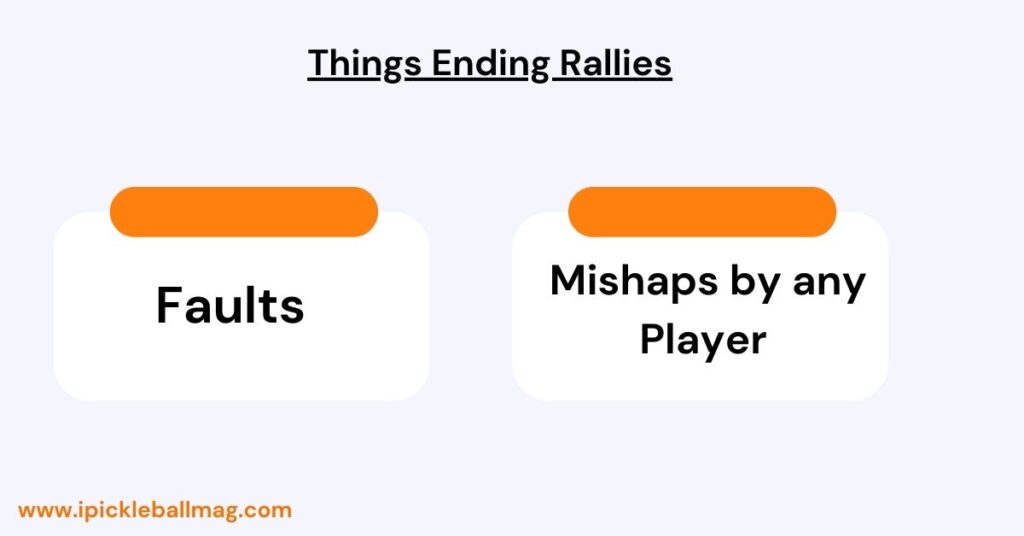
Faults
Some types of Faults examples are
- Foot fault (server steps on or over the baseline or sideline during the serve)
- Net touch (player touches the net with their body or paddle)
- Players not following the double bounce rule
- Ball lands outside the court boundaries (out of bounds)
- Player hits the ball more than once before it goes over the net (double hit)
Mishaps by the Players
Misconduct on court can also end a rally, such as throwing your paddle at the opponent.

What Is Rally Scoring In Pickleball
Rally scoring in pickleball is a scoring system where points are awarded on every rally, regardless of which team is serving. Other sports like badminton, volleyball, and tennis have evolved to incorporate rally scoring.
This differs from traditional pickleball scoring, where only the serving team can score points, and games are usually played to 11 points, win by 2.
In rally scoring, both the serving and receiving teams earn a point each time they win a rally. This system tends to make games progress faster, so rally-scoring games are typically played to a higher score, such as 15 or 21 points.
Importantly, while points are added to a team’s score, they are never deducted.
Advantages of Rally Scoring in Pickleball
Let’s explore the advantages of rally-scoring
Faster-Paced Games
Rally scoring tends to speed up the game because points are awarded after every rally, regardless of which team is serving. In this way, multiple games can be played in a shorter period of time, thus reducing the length of matches. In areas with a limited number of pickleball courts and a large number of players, this can be helpful.

Increased Excitement
Since both teams have the opportunity to score on every rally, the dynamic of the game becomes more engaging and exciting. Each rally becomes more critical, maintaining a higher level of intensity and focus for players and spectators alike.
Balanced Scoring Opportunities
With traditional scoring, the serving team has the sole opportunity to score points, potentially leading to longer periods without scoring. Rally scoring ensures that both teams have an equal chance to accumulate points throughout the game which promotes more fairness and balance.
Simplified Scoring System
Rally scoring simplifies the process of keeping track of points. Since every rally results in a point for one team or the other, there is less confusion about when points are awarded. This straightforward approach is especially helpful for beginners and casual players who may find traditional scoring more complicated.
It also makes it easier for players to track and remember the score during the game.
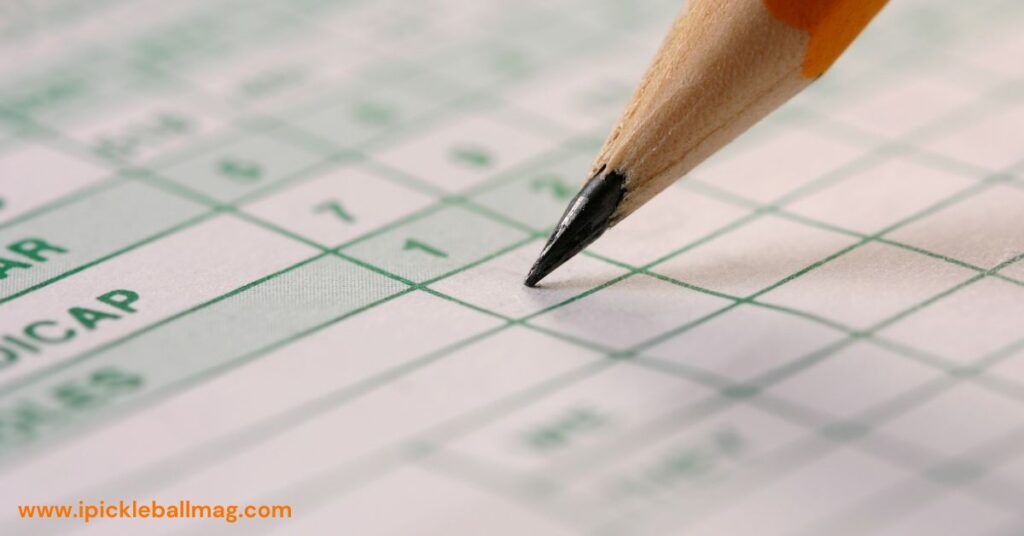
Predictable Game Times
Because points are scored on every rally, the duration of games becomes more predictable. This predictability is beneficial for scheduling matches and tournaments, as organizers can better estimate the time needed for each game.
A rally scoring game can be particularly beneficial for places like the local YMCA or Community Center where waiting times are a concern.
Better Spectator Experience
The constant scoring and quicker pace make rally-scoring games more entertaining to watch. By eliminating long stretches of scoreless play, spectators can watch a more engaging and continuous match.
Cons of Rally Scoring in Pickleball
After discussing the Pros, let’s discuss the Cons of Rally Scoring in Pickleball.
Limited Comeback Opportunities
One of the main criticisms of rally scoring is that it limits the opportunities for a team to make a comeback. In traditional scoring, a team can only score points when they are serving, which allows for extended rallies and the potential for dramatic comebacks.
However, in rally scoring, points are awarded on every serve, which can make it difficult for a trailing team to catch up. Additionally, the requirement for the Serve Team to score the final point when they are on game point can add pressure and impact the game dynamics, potentially reducing the fairness and excitement of the match.
Increased Pressure on Each Point
Every point matters in rally scoring, which can increase the pressure on players. While some might thrive under this constant intensity, others may find it stressful and less enjoyable.
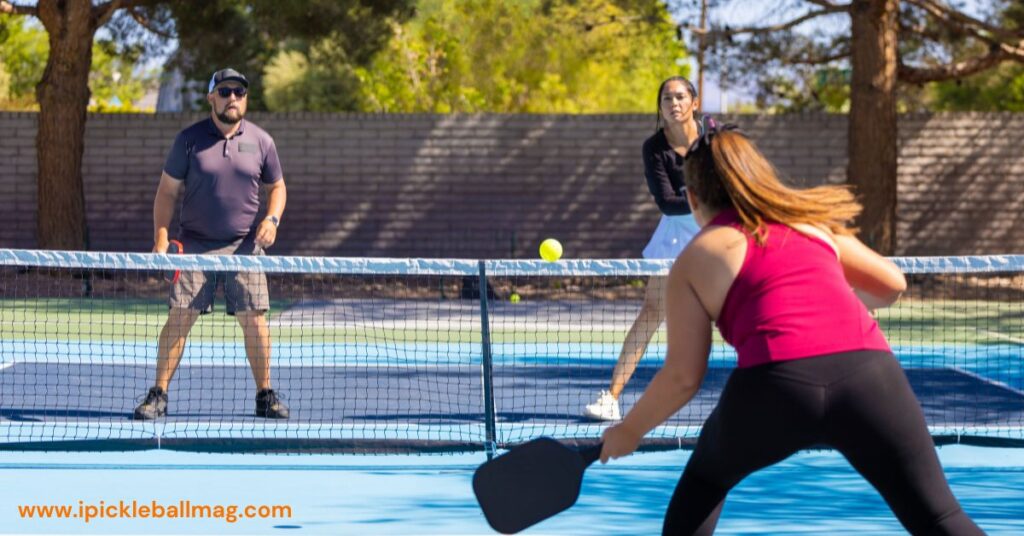
The margin for error becomes smaller, and a few mistakes can quickly determine the outcome of a game. It would be difficult for less experienced pickleball players to practice their shots so much during the whole game with rally scoring.
Impact on Doubles Play
Rally scoring can also alter the dynamics of doubles play. In traditional scoring, the server’s partner has a crucial role in positioning and setting up plays. With rally scoring, every rally’s outcome directly affects the score, potentially reducing the partner’s strategic contributions.
This could make doubles matches feel less collaborative and diminish the teamwork aspect that many players cherish.
Limited Comeback Opportunities
Finally, rally scoring can make it harder to stage comebacks. In traditional scoring, a team that’s behind can mount a comeback by stringing together successful serves. Rally scoring, with its constant point progression, leaves less room for dramatic turnarounds.

Differences Between Traditional Scoring and Rally Scoring
The main difference between traditional and rally scoring in pickleball is how points are awarded. In traditional scoring, only the serving team can score points, while the receiving team can only gain the serve. The serving team’s score is announced before each serve, and it affects the serve and rotation of court positions during the game.
In rally scoring, a point is awarded to whichever team wins the rally, whether it’s the serving team or the non-serving team. This makes the game faster-paced and results in more predictable game times, as points are consistently awarded throughout the match.
Strategies and Techniques in a Pickleball Rally
Having a solid strategy can make a real difference in the game when it comes to a pickleball rally.
Planning how to hit the ball and where to place helps players control the pace and direction of the rally. Smart strategies give players an edge, making each shot count and increasing the chances of winning points.
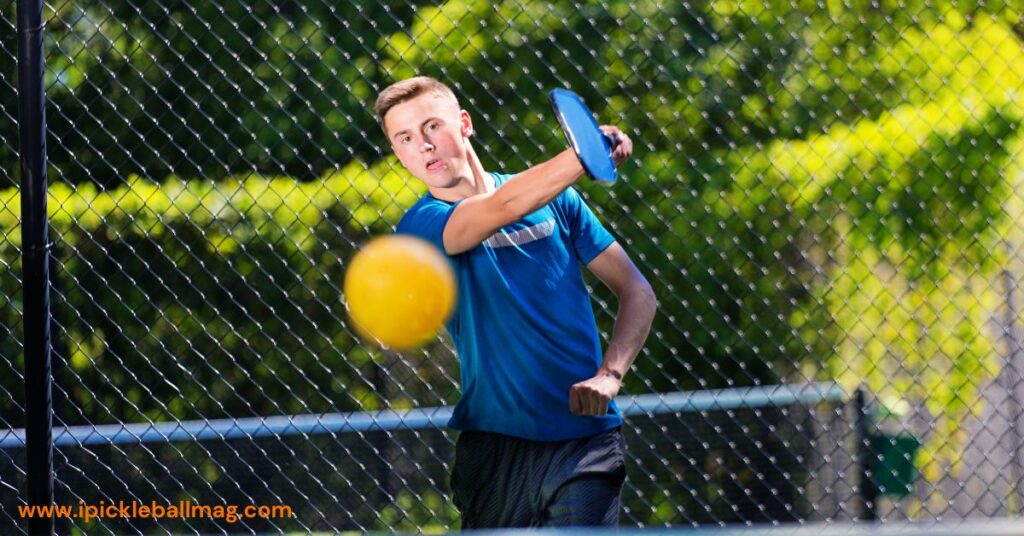
The two most essential Strategies are;
- Player positioning
- Using Different Shots for Different Situations
1. Player Positioning
Positioning is crucial in a pickleball rally. Players must be in the right spot on the court to respond effectively to their opponent’s shots.
Staying near the baseline for defense or moving forward for the offense can dictate the flow of the rally. Good positioning ensures players are ready to return shots with the most impact, making their strategy more effective.
2. Using Different Shots for Different Situations
During a pickleball rally, players employ a variety of shots to ensure their opponents stay on their toes. The forehand shot, where players hit the ball with the front of their paddle, is one of the most common shots.
The backhand shot, using the back of the paddle, adds flexibility. Volleys involve hitting the ball before it bounces, while smashes are powerful shots aimed at sending the ball down aggressively. A good shot at the right time can give you an edge over your opponent.
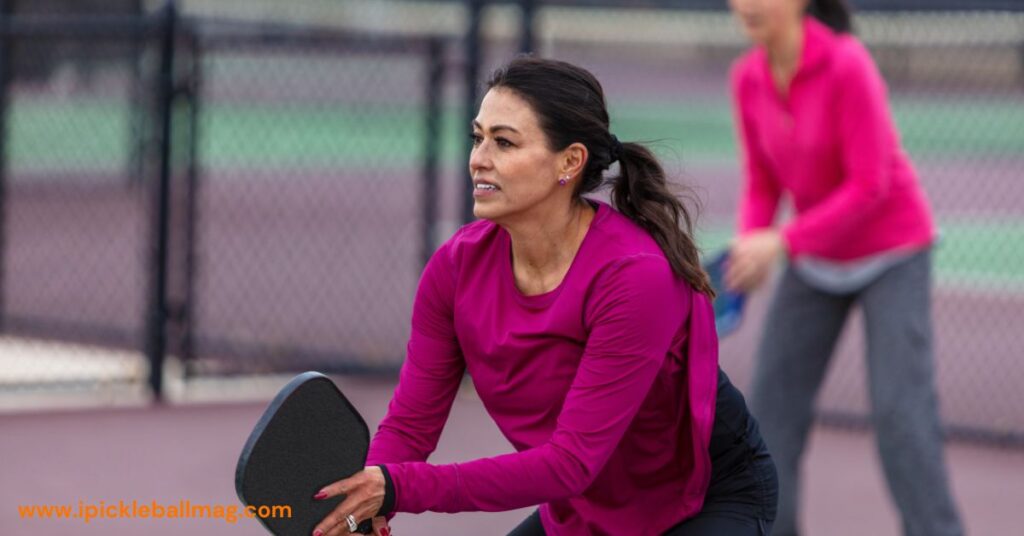
Pickleball Rally Mistakes and How to Avoid Them
Pickleball is a thrilling game filled with back-and-forth rallies that keep players on their toes. However, even the best players can make mistakes that cost them points.
Let’s explore some common mistakes and how to avoid them to up your game.
1. Hitting the Ball Too Hard:
Sometimes, players get too excited and hit the ball too hard, causing it to go out of bounds.
The solution is to focus on control and aim to hit the ball with enough force to keep it in play. Practice your aim and adjust your swing accordingly.
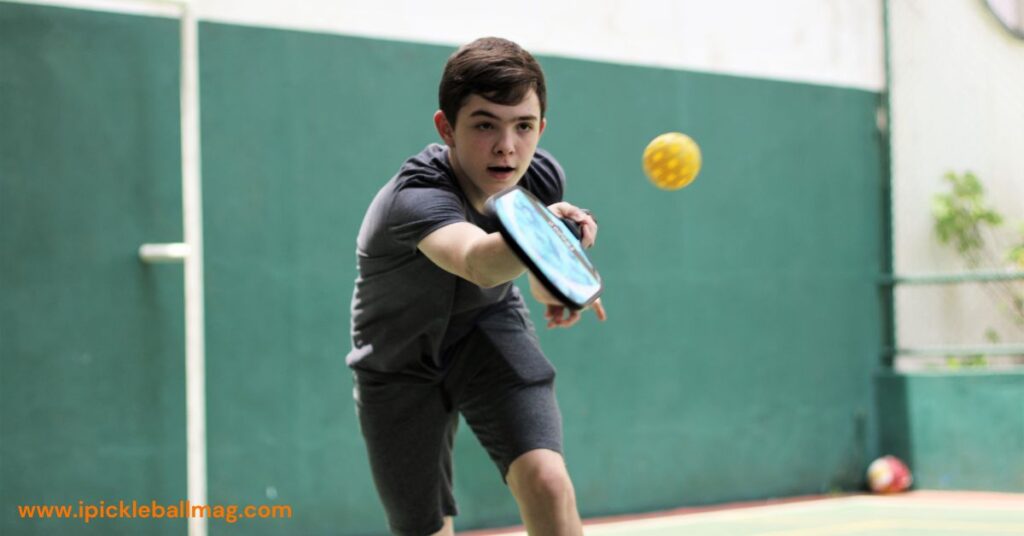
2. Not Watching the Ball:
One of the most common mistakes players make is they get distracted and take their eyes off the ball, which leads to mistakes.
My solution for this is to keep your eyes locked on the ball. This will help you react quickly and position yourself correctly to return it.
4. Poor Positioning
Standing in the wrong spot on the court makes it challenging to return shots effectively.
For this, I recommend you pay attention to where you stand. Position yourself between your opponent and where you expect the ball to land. This gives you a better chance to react.
5. Ignoring Communication
Playing doubles requires teamwork in pickleball, but not communicating with your partner can lead to confusion and missed shots.
Make sure to talk with your partner frequently about the mid-game strategies. Let each other know who’s taking the shot and who’s covering which part of the court. It is easier to coordinate and prevent mishaps if there is clear communication.
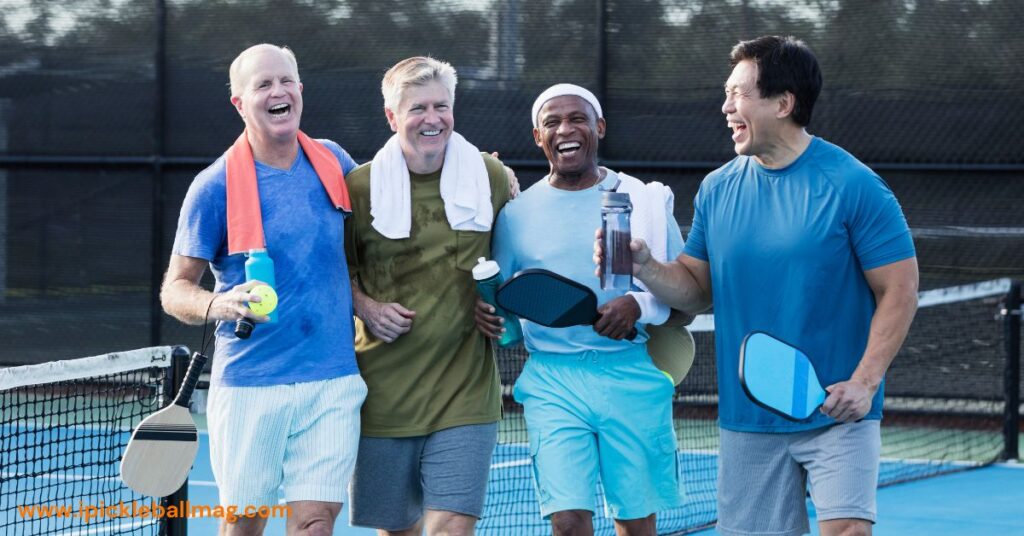
6. Being Too Predictable
Consistently hitting the ball in the same direction or using the same shots can make you predictable and easier for opponents to guess.
The solution to this is to Mix up your shots. Try different angles, speeds, and placements to keep your opponents guessing and off-balance.
Some Frequently Asked Questions
People also asked questions related to the Pickleball rally.
How do you Rally score in pickleball?
In rally scoring, points can be scored by either the serving team or the receiving team. If the serving team loses the rally, the serve goes to the other side without a second server. This system ensures continuous play and scoring opportunities for both teams.
How do you Rally score in pickleball?
In rally scoring, points can be scored by either the serving team or the receiving team. If the serving team loses the rally, the serve goes to the other side without a second server. This system ensures continuous play and scoring opportunities for both teams.
What is rally serving?
Rally serving in pickleball means that the serving team wins the rally and earns a point. Players remain in the same court position for the entire game, and the serve rotates between teams based on the outcome of each rally. This scoring system keeps the game dynamic and fast-paced.
What is a fault in pickleball?
A fault in pickleball occurs when the ball goes out of bounds or fails to clear the net, resulting in the other team earning a point.
Final Thoughts
In pickleball, rallies are like heartbeats, adding energy with action and teamwork. Like players moving together on the court, rallies show how everyone can play together.
So, If you’re new or already know how to play, pickleball rallies are exciting. New players learn and get better, and those who know a lot can keep getting better, too.
I Hope this guide clears your Question about What is a Rally in Pickleball.
Have a good day.
